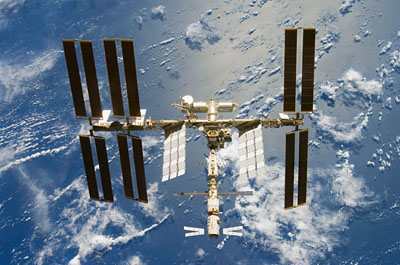In an unusual step, the station was lowered about a kilometer and a half, and then returned to its original route

The International Space Station had to maneuver this week to avoid space debris from a Russian satellite that broke up earlier this year.
For the purpose of the maneuver, the astronauts used the European Automated Resupply Vehicle (ATV) Jules Verne to perform the maneuver. This is the first time in five years that the space station is required to perform an evasive maneuver. The maneuver this time was unusual because it involved pulling the shuttle back to a lower orbit instead of a higher orbit, one that is occasionally performed to correct its altitude. The last time such a maneuver was performed was eight years ago. In addition, the Russians denied that their satellite had disintegrated, but in the end the control center in Moscow was the one that performed the maneuver.
The maneuver, which took place on August 27 at 18:11 GMT, lasted 5 minutes and two seconds. In the current configuration of the space station with the ATV attached to the left side of the Russian Zavezda component located at the rear of the station, this is the only spacecraft that can perform this type of maneuver. First, the station was rotated 180 degrees, so that the ATV's engines were in front of the station relative to its direction of flight.
After the turn, the controllers used Jules Verne's rear accelerators at a meter per second acceleration to slow the station down, lowering it by about a mile and a half. The shuttle orbits the Earth at an altitude range of 320 to 400 kilometers. Maneuvers are usually performed to raise the orbit to compensate for the drift and friction the station encounters in the remnants of the upper atmosphere. However, since the station is close to the upper part of the range of orbits allowed for it, any increase will result in an extension of the arrival time of the astronauts to the station in the following flights (shuttles and Soyuz) as well as of the cargo flights (Progress). Therefore, NASA had to make an unavoidable and wasteful decision and lower the orbit.
The satellite that disintegrated was a Russian naval survey satellite named Cosmos-2421 launched in 2006 that was designed to spy on Western military ships. According to NASA's Tracking Committee, the satellite broke up on March 14 into hundreds of pieces, and later broke up into more than 500 tracked objects, one of the largest debris clouds in space history. However, the Russians said that the satellite did not disintegrate, but only stopped working.
After the maneuver was completed, the station was raised back to its original altitude, and control of Jules Verne was returned to the ATV control center in Europe.

4 תגובות
These Russians are tweeting all over the world - they need to be taught a lesson.
And you have to wait for the Fugers to arrive at the space station on September 10